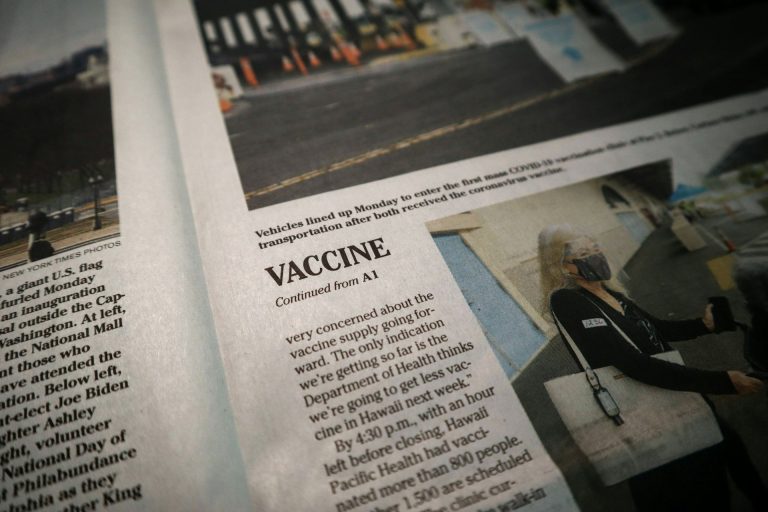The New York Times’ Belated Admission of COVID Misinformation: A Case of Self-Deception and Censorship
The New York Times, a bastion of mainstream media, recently published an op-ed admitting to being "badly misled" about the COVID-19 pandemic. This admission, however, falls short of acknowledging the newspaper’s own complicity in perpetuating misinformation and suppressing dissenting voices. While the op-ed blames "some officials and scientists" for orchestrating campaigns of misinformation, it conveniently overlooks the media’s active role in silencing alternative viewpoints.
Throughout the pandemic, The New York Times consistently promoted the official narrative, often dismissing legitimate concerns and labeling them as "misinformation." The newspaper cast doubt on the lab leak theory, defended the effectiveness of flimsy masks, exaggerated the risk of COVID-19 to children, and downplayed concerns about the vaccine’s efficacy. These actions were not merely the result of being misled; they represent a deliberate effort to control the narrative and suppress dissent.
The New York Times, along with other legacy media outlets, actively participated in censoring alternative perspectives. They mocked and vilified those who questioned the official narrative, labeling them as "misinformation superspreaders" and blaming them for COVID-19 deaths. This created a chilling effect on free speech, as individuals feared being ostracized and labeled for expressing dissenting views.
The op-ed’s author, Zeynep Tufekci, attempts to justify the censorship campaign by suggesting that it was a "reasonable defense strategy." However, this argument ignores the fundamental importance of open dialogue and the free exchange of ideas. Censorship, regardless of its perceived justification, is always detrimental to the pursuit of truth.
Tufekci’s conclusion further reveals a lack of self-awareness. Instead of acknowledging the inherent dangers of censorship, she laments that it "made it easier for people with the worst motives to appear trustworthy while discrediting important institutions." The true harm of censorship lies not in its potential to discredit institutions, but in its suppression of truth and the chilling effect it has on free expression.
The New York Times and other corporate media outlets played a crucial role in enabling censorship by creating artificial boundaries around acceptable thought. They labeled anything outside these boundaries as "dangerous misinformation," thereby justifying the suppression of dissenting voices. This not only stifled public discourse but also prevented a more nuanced and accurate understanding of the pandemic.
The author of the op-ed expresses surprise that the natural origin theory of COVID-19 gained such widespread acceptance. However, this consensus was not organic; it was manufactured through a coordinated campaign of misinformation, in which The New York Times played a significant role. The newspaper’s failure to acknowledge its own complicity in this campaign further undermines its credibility.
The obvious solution to avoiding such informational bubbles is to embrace dissenting thought, not silence it. The COVID-19 "misinformation" campaign, like other instances of censorship, was not about truth-seeking but about control. The same tactic was used to suppress the Hunter Biden laptop story and concerns about election integrity, both labeled "misinformation" to silence inconvenient narratives.
The New York Times’ belated admission of being misled about COVID-19 is a welcome, albeit insufficient, step towards accountability. However, the newspaper must go further and acknowledge its own role in perpetuating misinformation and suppressing dissent. Only then can it begin to rebuild trust with its readers and contribute to a more informed and open public discourse.
The media’s failure to acknowledge its own complicity in the "misinformation" campaign reveals a deeper problem: the mainstream media’s tendency to prioritize narrative control over truth-seeking. This is a dangerous trend that undermines the very foundations of a free and democratic society. The media must learn from its mistakes and embrace a more open and inclusive approach to reporting, one that values dissenting voices and prioritizes the pursuit of truth above all else.


